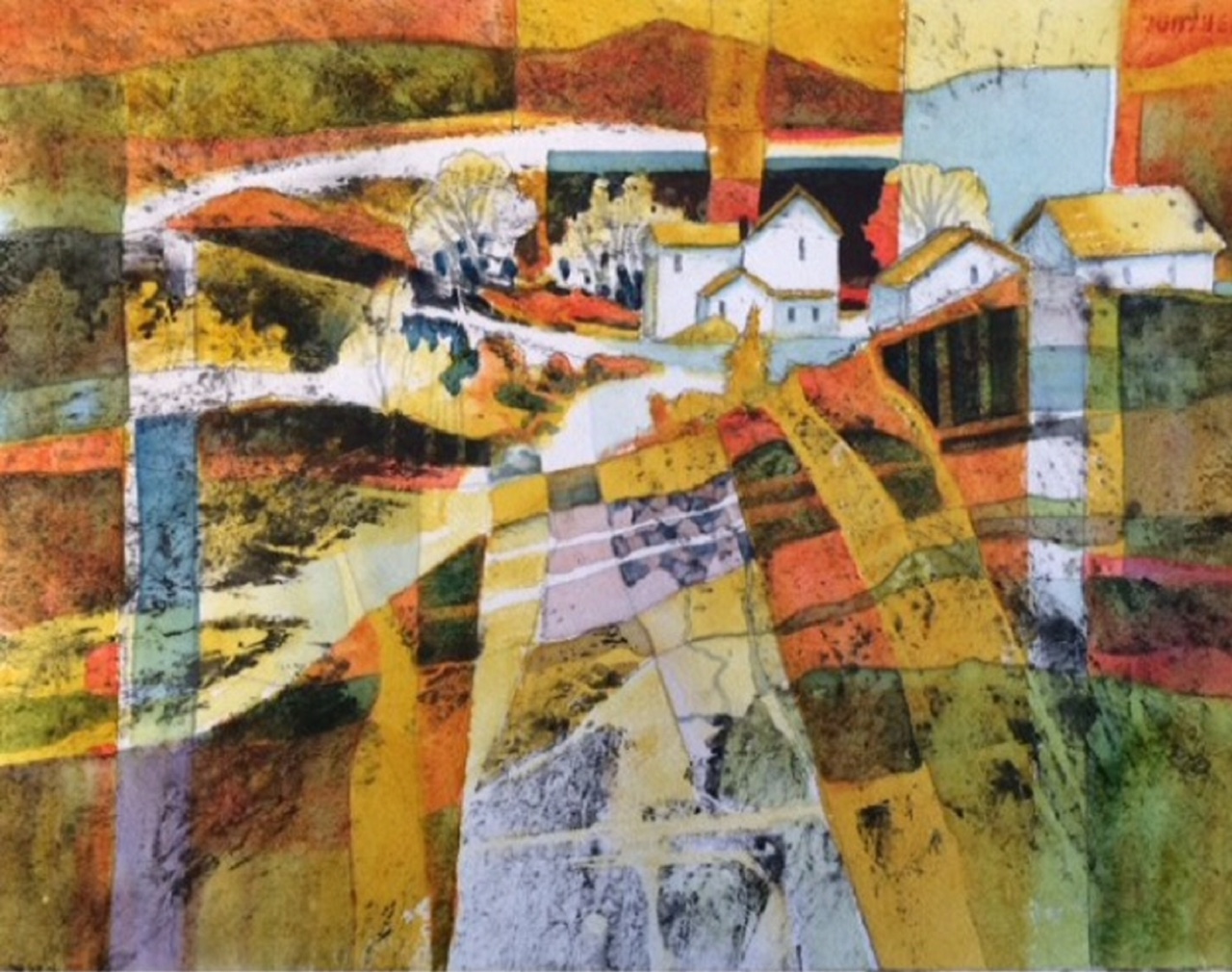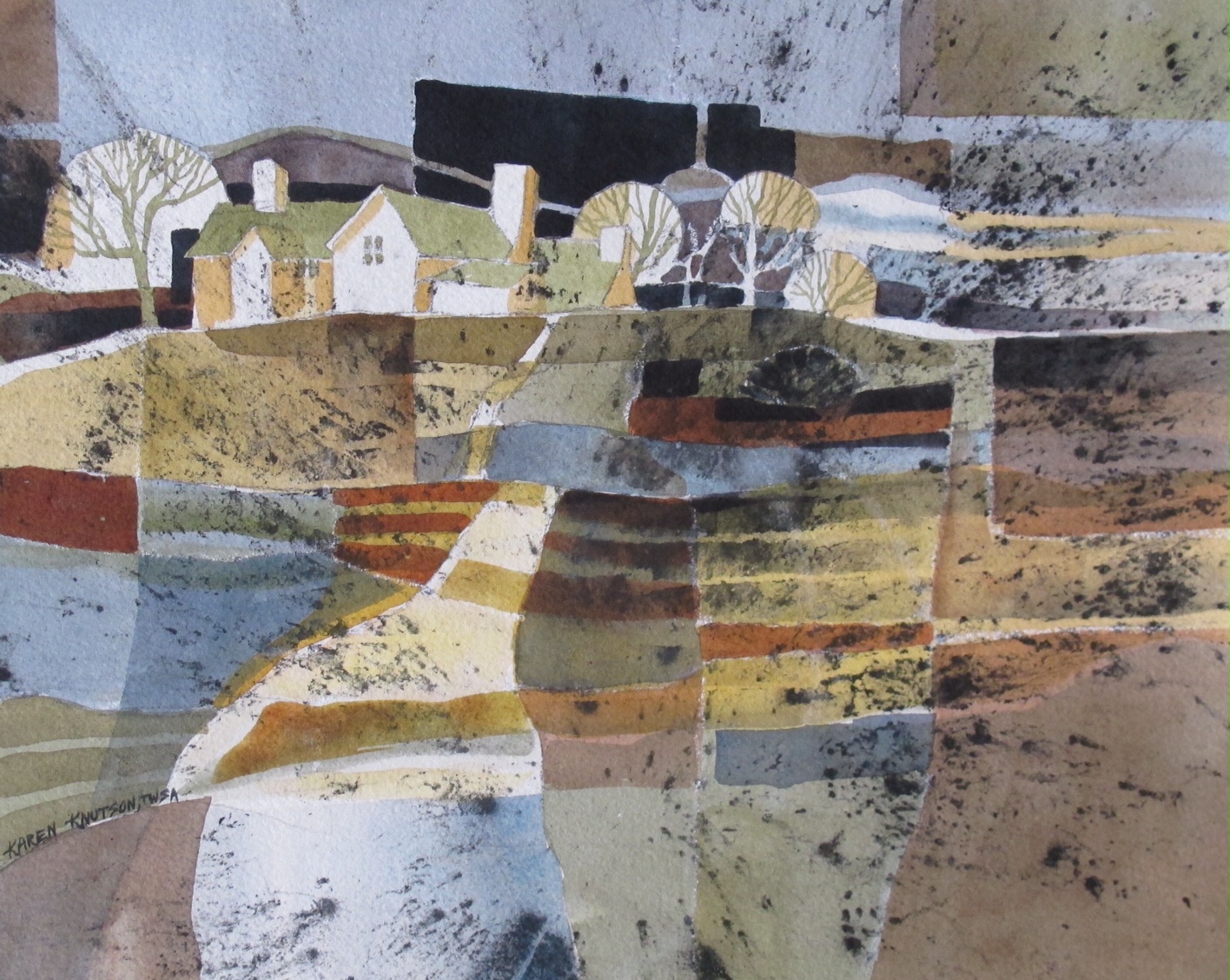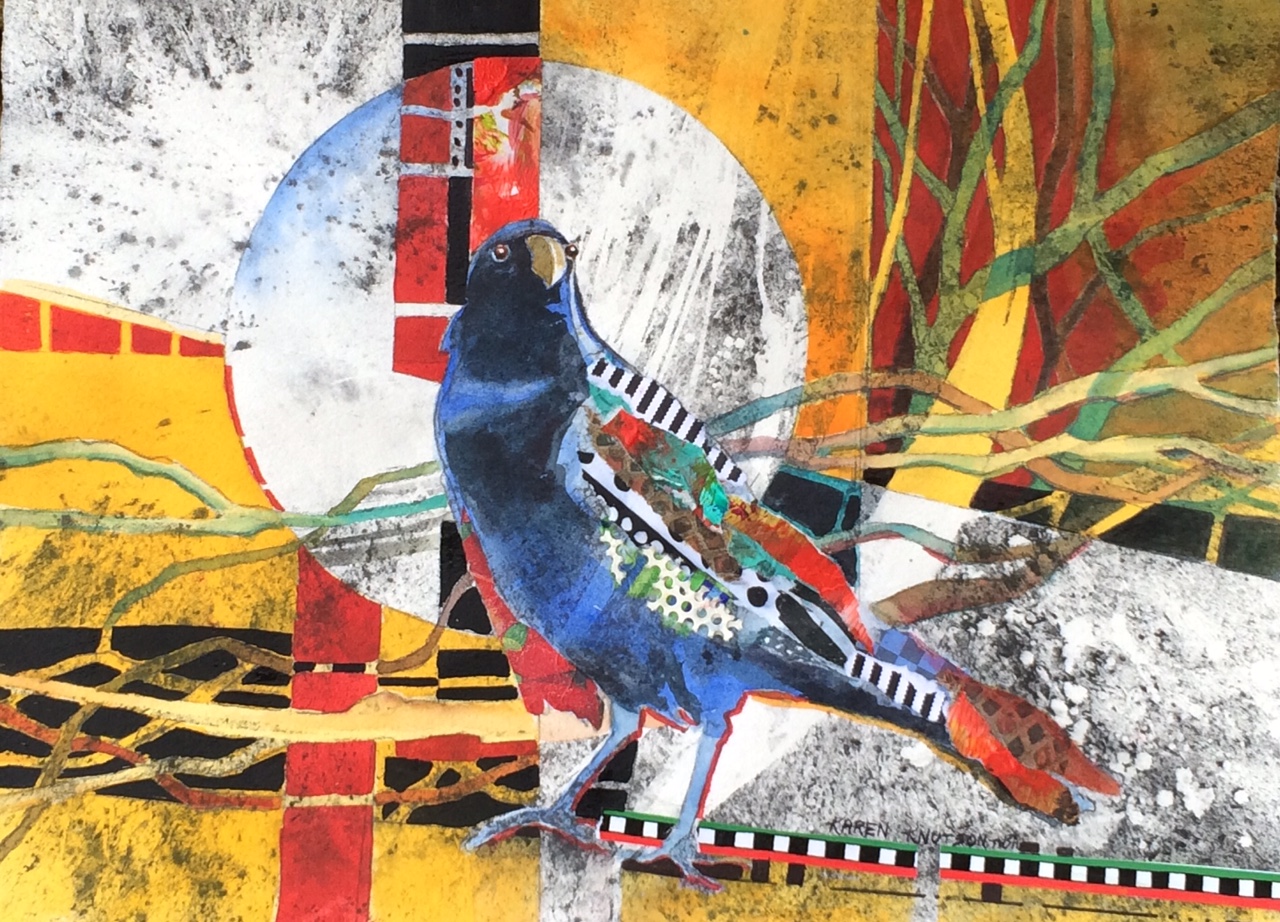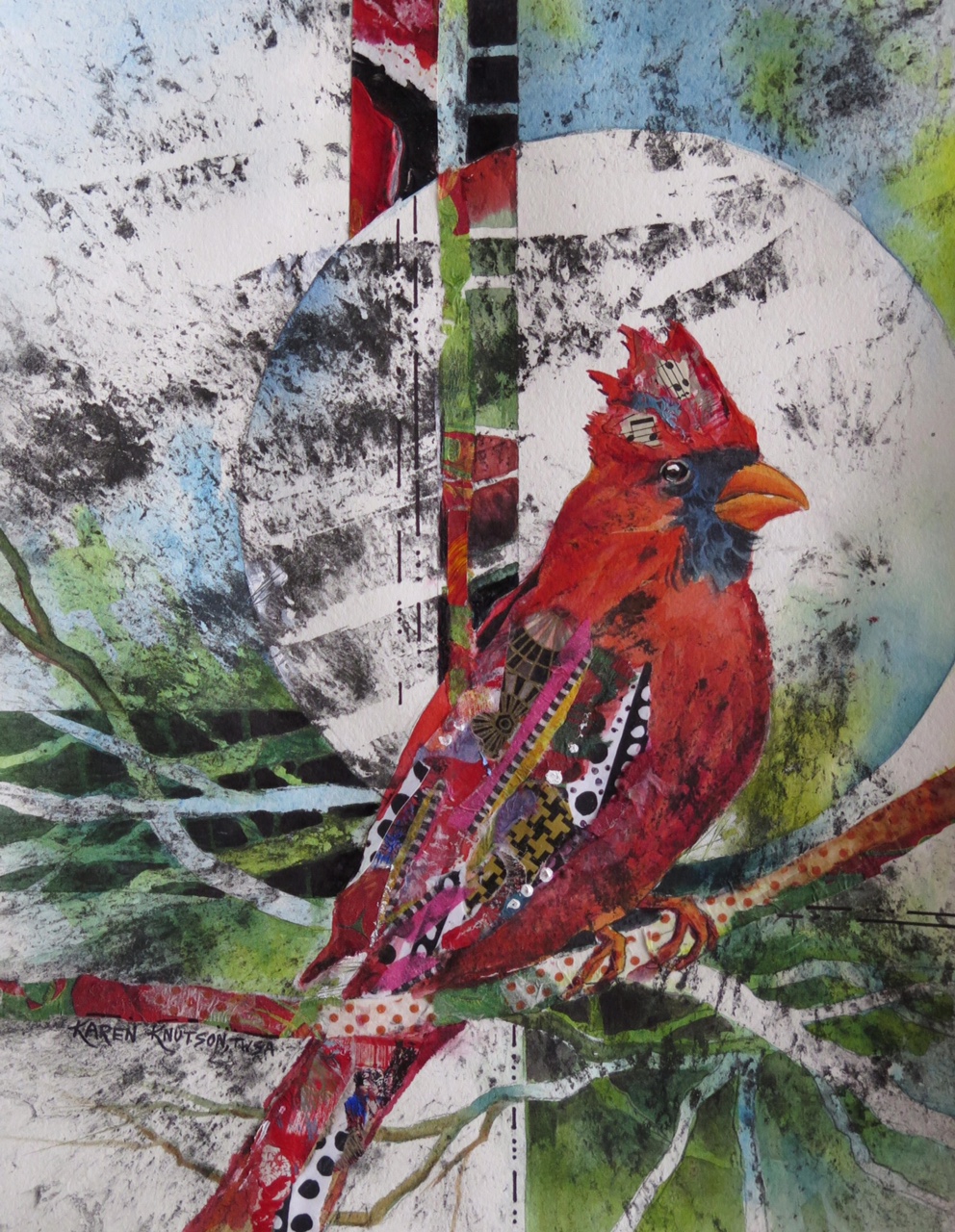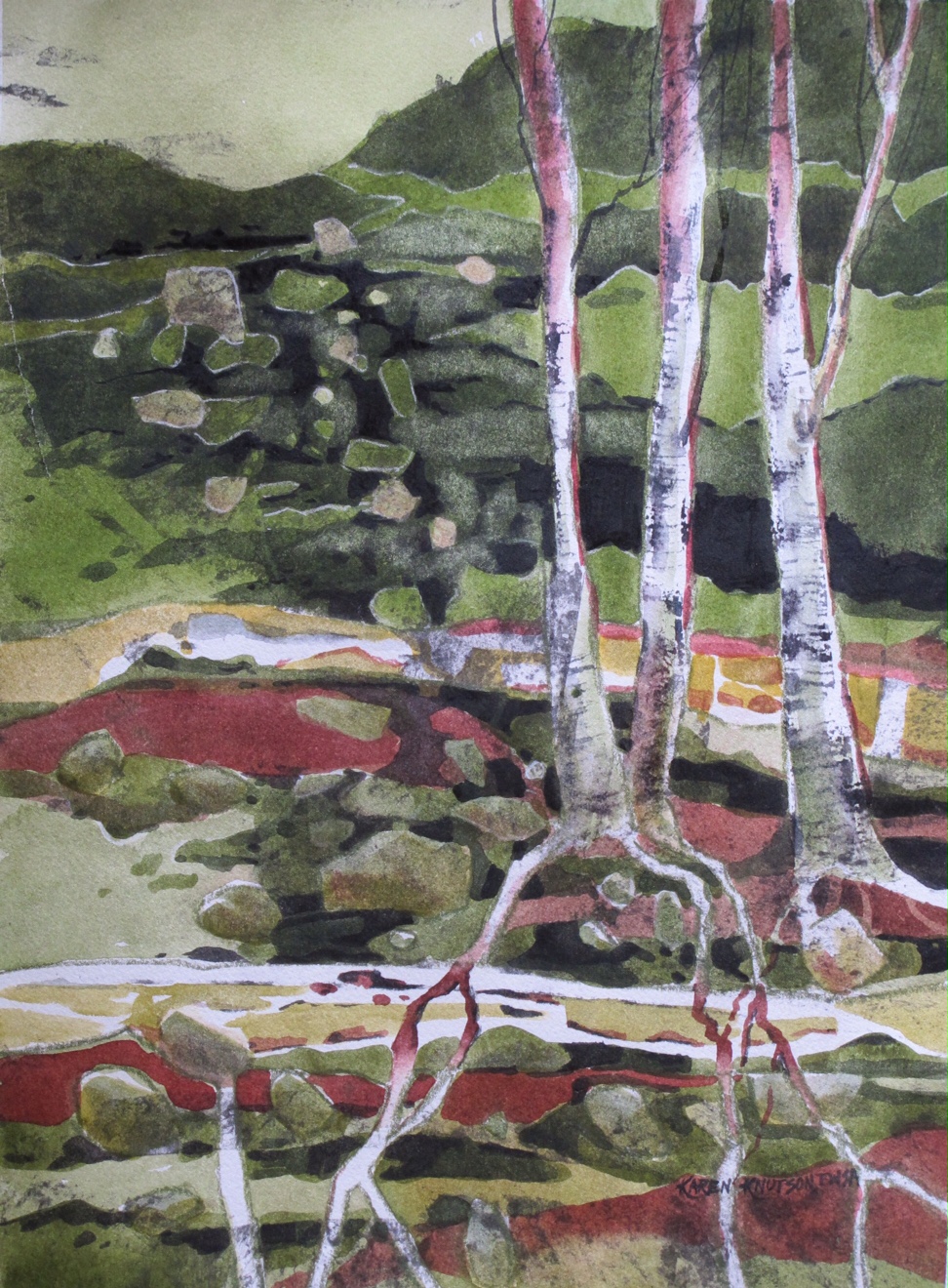November 1 - 4, 2018 (Thursday – Sunday)
9:30 AM - 4:30 PM
Class Description
In this workshop, we will be working with a charcoal pour as a preparation for our paintings. This is such a fun process, and very easy! We will actually be pouring a big bucket of water onto a surface that has charcoal powder sprinkled on it. While waiting for the charcoal surface to dry, Karen will share some new drawing techniques that will elevate your paintings to the next level! After the charcoal surface is dry, we will be adding watercolor and collage. On one day, students will paint birds, and on another, they will learn how to paint a landscape that has great texture created by the charcoal pour. There will be fun new ways to establish texture, using collage papers, and different surface treatments for special effects. Karen Knutson is a very popular watercolor instructor, who believes that painting should be fun, and gives lots of individual help. She is known for her enthusiastic demonstrations and lessons in good design. Check out her website: www.karenknutson.com or her blog, www.karenknutson.blogspot.com
About the Instructor
I attended Concordia College in Moorhead, MN and have taken many watercolor workshops from nationally known artists, such as John Salminen, Karlyn Holman, Mary Ann Beckwith, Gerald Brommer, Carole Barnes, Barbara Nechis, and Diane Faxon. I have taken countless more workshops, but the ones mentioned have had the greatest influence over the direction of my artwork. I will always be eternally grateful to my first watercolor instructor, Raghnild Berstol, whose positive comments and free spirited demonstrations headed me in the right direction and I've been addicted to watercolor ever since.
Originally from a ranch in Montana, I now reside in Minneapolis with my husband of 41 years. We have two children and 4 beautiful grandchildren. We love to visit Lake Superior and the North Shore as much as possible. It's a favorite, inspirational spot to paint. I've painted countless images of that shoreline and Split Rock Lighthouse, too.
I paint watercolors because I love its free and wild qualities, forcing the artist to adjust to its many moods. For the past few years, I’ve added collage and acrylic, which produces wonderful textures and color discoveries. My paintings are sometimes totally abstract, and sometimes there is something recognizable in the painting. I like my paintings to be different than “normal paintings” - anything that will make the viewer take a second look and be drawn into the painting! I used to be attracted to paintings with unusual colors, but now I’m drawn to paintings with dynamic design. First and foremost, I like to have fun while I paint, and I’m constantly trying out new things, so that I will grow as an artist. I feel like the luckiest person alive to be able to do something that I love so much.
My paintings are featured in Splash 6, Watercolor, Fun and Free, and Searching for the Artist Within, Watercolor- The Spirit of Spontaneity, Watercolor without Boundaries, The Artistic Touch 4, Watercolor - Making your Mark, and the magazine, Watercolor Magic (Aug.’04). I am a signature member of Transparent Watercolor Society of America, (formerly known as Midwest Watercolor Society), San Diego Watercolor Society, Red River Watercolor Society, the Montana Watercolor Society, and the Northern Plains Watercolor Society, the Minnesota Watercolor Society, NorthStar Watermedia Society, and Missouri Watercolor Society. My artwork is now being featured on gift bags produced by Garven, Inc. They can be found in retails stores such as Target and Walmart. My artwork is also handled by numerous galleries.
Supply list
1. 1 full sheet 140 pound Arches cold press paper. We will probably be working on quarter sheets (size 11” x 14”). Use either gator board or I prefer a plywood board for support.) Or watercolor blocks work well also.
2. Bring your palette filled with your usual colors, making sure that you let them dry in the palette for one or two days. (The reason for this, is that I double load colors and if they are fresh out of the tube, you won’t be able to do this procedure. However, if you are used to using fresh watercolors, you may do that.) Because everyone always asks, my palette is as follows. I use mainly transparent colors. (Please do not feel that you must go out and buy these colors. The most important 5 colors are listed first.) Aureolin yellow, permanent rose (or DaVinci red rose deep), cobalt blue, winsor green, alizarin crimson, antwerp blue, neutral tint, French ultramarine blue, manganese blue, cerulean blue, quinacridone gold, burnt sienna, permanent magenta, winsor red, and scarlet lake
3. Watercolor brushes (bring your favorites) I use 1” flat and ½ “flat, and a small (#6) round brush.
4. #2 Pencil, eraser
5. Permanent ultrafine black marker AND permanent fine black marker. I use a Sharpie Twin Tip permanent black marker (Available at office supply stores.)
6. Scissors and/or utility knife
7. Sketch pad or notebook for taking notes.
8. white chalk or white charcoal pencil
9. Water containers (old Cool Whip containers work great) bring 2.
10. Bring a plastic container with a lid for storing the acrylic matte medium that I will be sharing with you. (I use small butter containers or sour cream plastic containers.)
11. Masking tape (I prefer Duck brand tape, because it sticks well. Get at Walmart or Fleet Farm.) Personally, I don’t like the blue tape, because I think it influences your color choices.
12. Ruler
13. Kleenex brand tissues (because they pop up for easy grabbing)
14. Sponge or rag for wiping off your brushes.
15. Margarita salt or table salt
16. Spray bottle (I use a push button top, old Windex bottle. You can usually get these at Holiday gas stations.) Also, a Chloroseptic spray bottle works well. (We empty them out and put water in them.)
17. Blow dryer (optional)
18. Camera (optional) If you want to take photos of my demonstration in progress, that’s OK with me.
19. Bring one package of napkins that have repetitive shapes (ie., checks or diamonds). We’ll have a napkin exchange. These will give you ideas for negative painting later. (Also, bring old newspapers to use for collage)
20. Bring a big bucket if you have one. (ie. ice cream bucket size)
21. Acrylic matte medium OR “Yes” paste is used for adhesive (with an old brush) to apply the collage materials.
22. Masking fluid (optional) I use Pebeo brand, because of its fluidity and that it is grey in color.
23. Palette knife (optional) I use this to apply masking fluid, so make sure that it fits in the top of that bottle. Also, a plastic picnic knife works well for this.
24. Tracing paper
25. Graphite paper (a great brand is Saral, graphite color)
26. We will be using a few acrylics for finishing touches, so bring titanium white and carbon black acrylic for sure. (I have some other acrylic colors to share, but for sure bring white and black.) If you have a ½” flat acrylic brush, bring that. If not, your watercolor brushes will work for this one step.
27. Bag lunch
28. Reference photos of birds that are enlarged to about size 7” high. (White birds don’t work well for this exercise.) We will be copying these to use for the outside shape. I will be bringing examples of crows and cardinals. You may want to bring reference photos for your landscapes. I will be making mine up!
*Be sure to dress in layers, so you can adjust to your hot flashes. Also, wear old clothing and old shoes. This can be messy.
Karen will bring along these supplies and charge a small fee for the use of them:
1. Dry Charcoal powder. (General brand)
2. Krylon Workable fixative spray
3. Oriental fiber papers, (my favorite are chiri, amime, and unryu papers) and assorted paper napkins. If you have some collage materials, you may want to bring them. I will have a few fiber papers for sale.
4. (Optional) Caran d Ache crayons
5. Optional: markers for finishing touches or color studies. My favorite markers are Tombow brand
SUPPLY LIST
Please bring: apron, paper towels.


